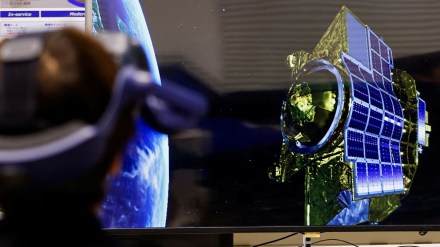Japan’s lunar lander touched down on the Moon’s surface on January 19. It had to be quickly powered down after the solar panels failed to generate energy. There is a chance that there might be some life left in the lunar lander.
Japan became the fifth nation to land on the moon when the Smart Lander for Investigating Moon landed successfully. After its soft landing, the probe is believed to be tilted unexpectedly on its side.
However, Slim managed to successfully transmit technical data and imagery gathered during its descent and landing before intentional shutdown. Officials from the Japan Aerospace Exploration Agency express optimism that the probe’s solar panels, currently oriented westward and away from sunlight, may soon begin generating power.
As per the telemetry data, SLIM’s solar cells are oriented towards the west. If sunlight starts illuminating the lunar surface from the west, there is a potential for power generation, and preparations for recovery are underway, as stated by the team in a post on X. The team also emphasized that SLIM is capable of operating solely on power derived from its solar cells.
JAXA is anticipated to provide an update on the probe’s status by the week’s end. Slim, nicknamed “Moon Sniper,” serves as a demonstrator primarily focused on validating the technology essential for highly accurate lunar landings.
The objective of the probe was to achieve a landing within 100 meters of a specified location on the rim of the Moon’s Shioli Crater. Presently, Moon missions consider a landing within a kilometer of the target as precise. The probe utilized JAXA’s ‘pinpoint technology’ to land on the slope of the crater, a technology previously employed by Japan to successfully land probes on two asteroids.
JAXA emphasizes that its high-precision technology will play a crucial role in the future exploration of the Moon’s hilly poles, considered potential sources of oxygen, fuel, and water. The Japanese space agency has indicated that it will take several weeks to assess the precision of Slim’s landing.
Additionally, Slim carried two mini-rovers named LEV-1 and LEV-2. Both of these compact robots were successfully deployed as intended, with LEV-1 confirmed to be operational on the lunar surface, according to JAXA officials.
